Public Sector
 The soundproofing and sound-insulation challenges around the public sector are as large, diverse and complex as the sector itself. Covering every single public-sector soundproofing and sound-insulation area in this brief introduction would be impossible. However, here are some of the more common soundproofing problems in the public sector.
The soundproofing and sound-insulation challenges around the public sector are as large, diverse and complex as the sector itself. Covering every single public-sector soundproofing and sound-insulation area in this brief introduction would be impossible. However, here are some of the more common soundproofing problems in the public sector.
Note that the acoustic issues described here are not exclusive to the public sector. Acoustic problems, and the materials from Sound Reduction Systems (SRS) Ltd used to treat them, can apply to many applications. If you can't find your particular acoustic problem here, please get in touch and our technical team will provide free advice.

One of the main soundproofing issues affecting the public sector is reverberation and echo. These problems are most often found in large, open areas with hard, acoustically reflective surfaces. In school halls and police interview suites, for example, they can make it hard to pick up what's being said. Areas such as hospital waiting rooms, canteens, gyms, and assembly halls, meanwhile, can be subject to general disturbance.
Public-sector soundproofing problems in these areas can easily be treated with SRS' high-specification acoustic absorber range, Sonata. Available in a range of attractive fabric colours, Sonata Aurio and Sonata Vario acoustic panels can be matched to your environment. Unlike many other acoustic absorbing panels, the Sonata range does not use any mineral fibre in its manufacture. Instead, it uses non-fibrous and non-shedding acoustic foam, which makes it perfect for hospitals and schools.

One area of the public sector where soundproofing is vital is where privacy and confidentiality are concerned. These areas include hospital consulting rooms, boardrooms, and police interview rooms. Obviously, it's critical that sound can't leak out in these areas. However, with today's preference for lightweight construction, like stud work partitions and suspended ceilings, that can be easier said than done.
Fortunately, at SRS, we have a range of acoustic products ideal for these public-sector applications. They're specifically designed to increase the acoustic performance of lightweight construction elements in floors, walls, and ceilings. Maxiboard is an extremely high-performance acoustic building board that's designed to be used in place of standard plasterboard for soundproofing walls and ceilings.
Acoustilay and Maxideck are high-performance acoustic flooring systems, perfect for lightweight, timber-joisted floors. The Soundblocker system is ideal for increasing the acoustic performance of suspended ceilings, especially when they span two adjoining rooms with a common cavity above. A typical example of this soundproofing issue would be across a consultancy room and the public waiting room in a hospital.
 Soundproofing in the public sector often has to take into account the many busy areas within it. Public-sector offices are often in multi-storey buildings and people moving around on the floor can cause serious disruption to those below. Typical impact noise problems are loud footsteps and moving furniture, which can cause a lot of disturbance if left untreated.
Soundproofing in the public sector often has to take into account the many busy areas within it. Public-sector offices are often in multi-storey buildings and people moving around on the floor can cause serious disruption to those below. Typical impact noise problems are loud footsteps and moving furniture, which can cause a lot of disturbance if left untreated.
At SRS Ltd, we have a range of acoustic flooring systems that can treat impact noise problems in the public sector. Acoustilay and SubPrimo are perfect for installing beneath floor finishes to introduce high levels of impact sound reduction.
Expert advice
If you require acoustic products for use within your next project and need some expert assistance with specification, then we’d be delighted to speak to you. We can be contacted on the telephone on 01204 380074, by email to info@soundreduction.co.uk, or even by tweets to @soundreduction. An enquiry can also be made using the form below. All the advice we offer is from qualified technical personnel and is completely free of charge.









































